25 years later, the story of a Halifax hospital and a U.K. organ-hoarding scandal
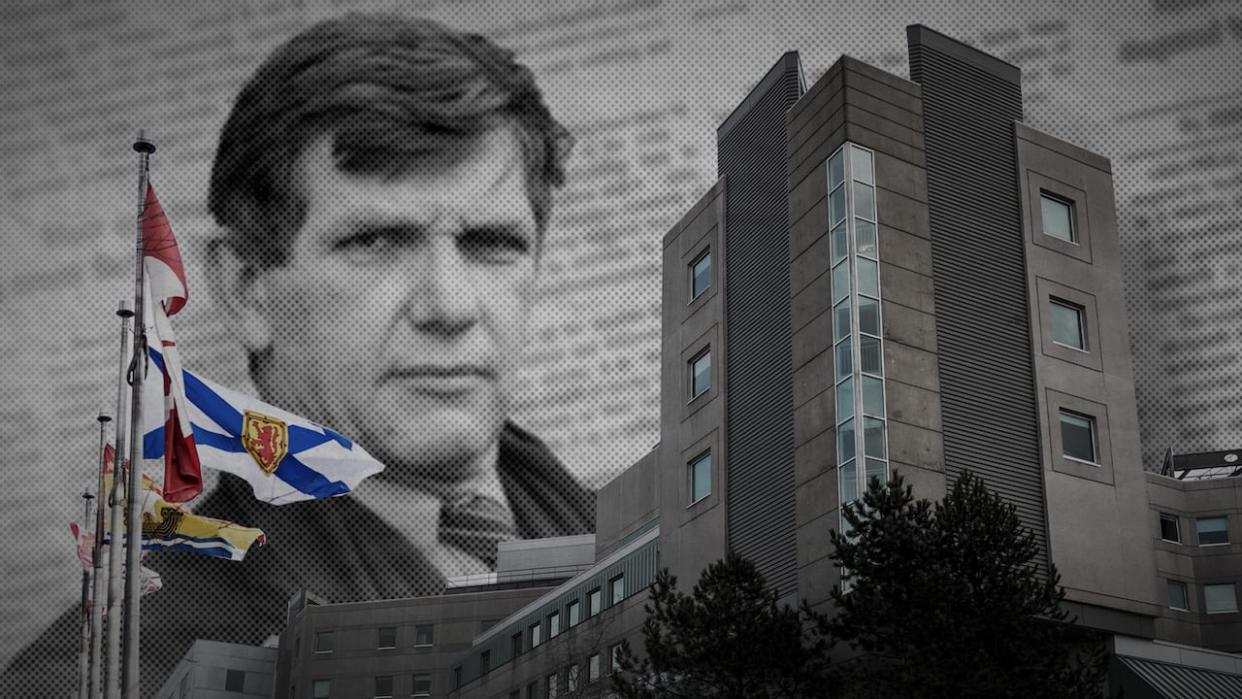
On Jan. 18, 1998, Kent Dooley sat across from a brilliant pediatric pathologist with a devoted following at Halifax's IWK Grace children's and maternity hospital and told him he was fired.
The move by Dooley, the head of pathology and laboratory services, was bewildering to many outside the division.
"'I sure hope you have a good reason for this,'" Dooley recalls the hospital's head of obstetrics telling him later that day.
"'Yeah, I do,'" he replied. "'And I can't tell you what it is.'"
That polarizing moment, it later turned out, would save the hospital from the riptide of a macabre scandal that exploded less than two years later on the other side of the Atlantic.
It was revealed that the organs, including hearts and brains, from more than 850 infants were being stored in the cellars of a building used by the Alder Hey hospital in Liverpool, England, stripped from the bodies of dead children and stockpiled without their parents' consent.
At the centre of the scandal was pediatric pathologist Dick van Velzen, who had worked at Alder Hey between 1988 and 1995, before decamping for Canada and the IWK hospital.
It was a horror show for the parents of dead children at Alder Hey, a headline mill for the media, was named one of Time magazine's Top 10 scandals of the year, and suddenly meant the IWK faced many questions.
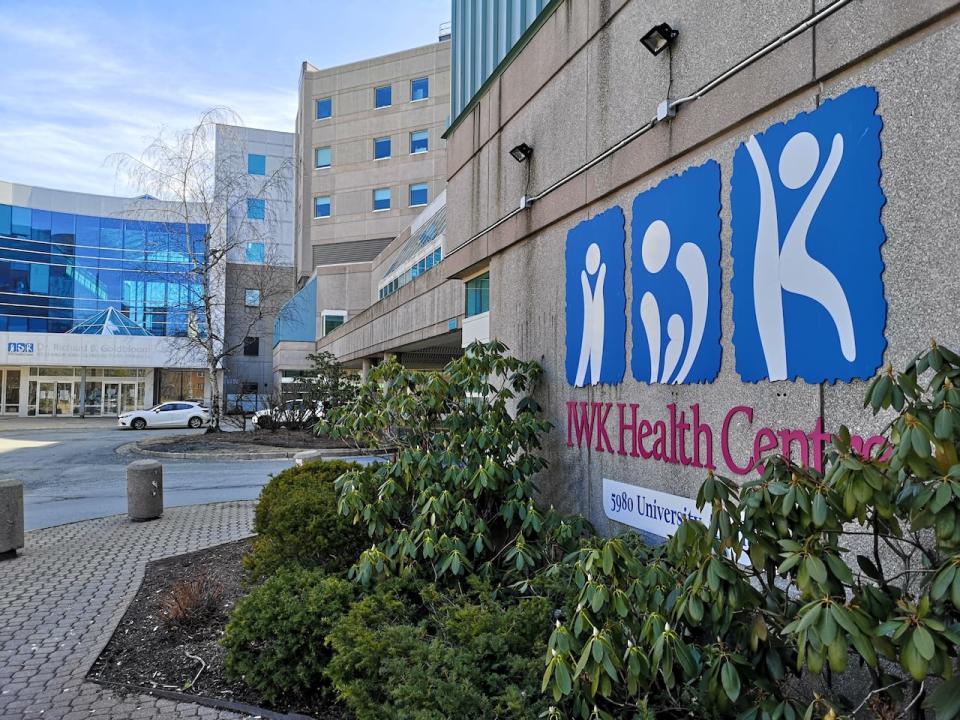
Van Velzen's former IWK colleagues are speaking publicly about the two years he spent at the hospital. (Brian MacKay/CBC)
More than 25 years later, van Velzen's former IWK colleagues are speaking publicly about his two-year tenure at the hospital, describing in detail what led to his hiring, their creeping concerns about his work and ethics, and their decision to finally seek his dismissal.
They want the particulars of what happened put on the record, and co-authored a piece earlier this year in the Canadian Journal of Pathology. They also hope there are useful lessons to be drawn, not just about what went wrong, but also about what went right at the IWK. How instead of becoming another Alder Hey, the hospital faded into a scandal footnote.
A good first year
Pediatric and perinatal pathologists broadly perform two kinds of work. One is autopsies on dead children to determine cause of death or whether an earlier diagnosis was correct. In the case of miscarriage, an autopsy can reveal crucial genetic information to parents.
The second aspect of their work is to examine tissue, such as from a tumour, removed from a living patient during surgery to help diagnose and treat diseases such as cancer.
The work is crucial. It's also exacting and detailed-obsessed, which is why lapses due to carelessness or hurriedness are egregious.
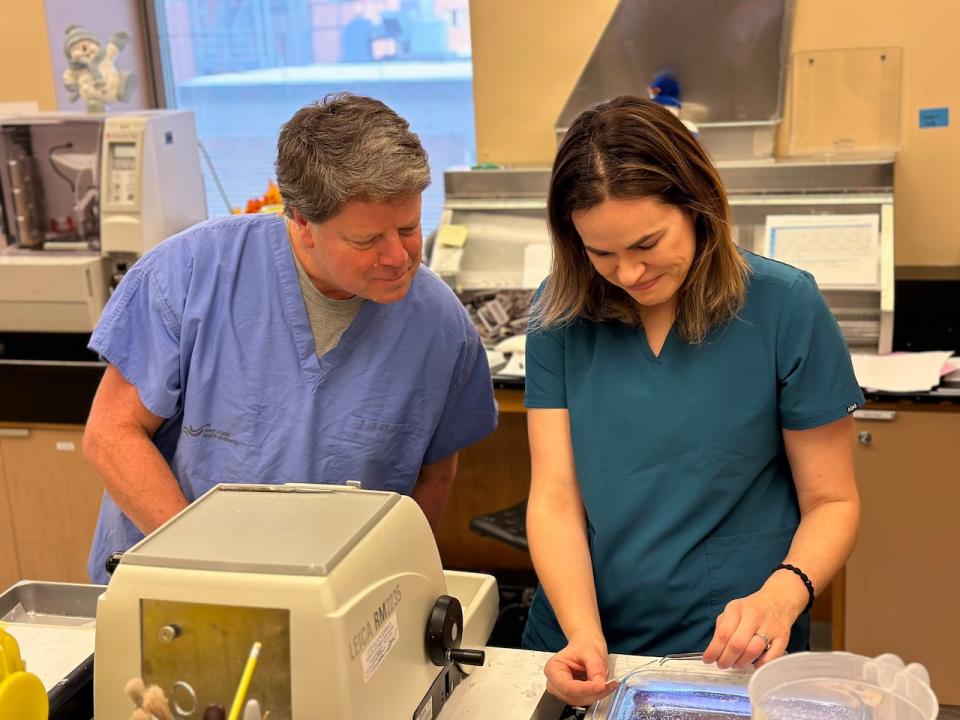
Dr. Bob Fraser, left, a pediatric pathologist at the IWK Health Centre is shown with medical laboratory technologist Erin Gillis on Dec. 6. (Richard Cuthbertson/CBC)
In the mid-1990s, the IWK, like many hospitals, was faced with a pediatric pathologist shortage and was desperately trying to recruit an experienced specialist to join three junior doctors.
In 1995, van Velzen reached out to one of the hospital's pathologists, Dr. Lothar Resch. Another pathologist who worked at the IWK, Dr. James Wright, said van Velzen gave a lecture as part of his interview and his level of knowledge was "outstanding."
His references, including from Alder Hey, were good, and included a glowing one from a world-renowned pediatric pathologist.
When asked why he wanted to leave one of the largest children's hospitals in Europe, Dooley said van Velzen replied it was due to dysfunction and corruption in the country's health service.
During van Velzen's early days at the IWK, Wright and others were willing to shrug off the more difficult parts of his personality, such as his arrogance. At one point, van Velzen boasted about a T-shirt his friends at Alder Hey had given him that said "Dick van Velzen" on the front, followed by "Before van Velzen dicks you" on the back.
His first year at the IWK went well, and he was made head of anatomical pathology, dividing his time between clinical work and various research endeavours.
Mistakes mount
The second year was different. It was lab technologists that first raised concerns, often confiding in Resch, the most senior of the remaining pathologists. Mistakes that were once rare became more common.
In the early 1990s, a new IWK policy mandated that 10 per cent of a pathologist's reports would be reviewed by a colleague. As errors mounted, van Velzen's colleagues increased their vigilance.
It was awkward confronting their boss about sloppy autopsy reports or significant diagnostic errors. In one case, van Velzen described the inside of a heart that he'd never dissected and was still sitting fully intact in a jar.
One of the issues, Wright suspected, was that van Velzen would often dictate results using a template, long after performing an autopsy, and was likely confusing cases.
Van Velzen was at times contrite. At others, he blamed technologist staff or stood by his reports, citing additional but undocumented work he had done, according to Dr. Bob Fraser, a pathologist who worked with him.
What bothered Fraser was that even when the mistakes were clear, there was no urgency from van Velzen to fix them.
"If you are told that there is a mistake, there's nothing more important in your life on that particular day than getting that mistake corrected," said Fraser, 63, who still works at the IWK. "First of all, you admit it, and then you correct it, and then you let everybody know what the correction is. And it just didn't seem to happen with Dr. van Velzen."
Research concerns
Dooley was also growing concerned about research being conducted by van Velzen, who had ingratiated himself with many of the medical staff outside pathology, adding their names — sometimes 10 at a time — to dozens of the scientific abstracts he submitted to conferences.
Abstracts are meant to describe preliminary research. They are not peer-reviewed, Dooley said. The worry was that van Velzen was not producing full peer-reviewed papers.
Instead, Dooley said it was becoming evident that van Velzen was submitting abstracts before he did the research. One, for instance, was based on hundreds of microscope slides that had never been reviewed.
In late 1997, Resch gathered Fraser and Wright in this office and asked them a thorny question: Would they trust van Velzen to diagnose one of their loved ones if they were not given the chance to confirm it themselves?
Put in such concrete terms, it was a thunderbolt. Both answered no.
They moved the problem up the chain at the IWK, submitting documented examples of issues with van Velzen's work, and he was fired.
Aftermath of the firing
But van Velzen did not go quietly. He filed a wrongful dismissal suit that was later abandoned, and a parallel investigation by the IWK's medical staff discipline committee quickly drew in a dozen of the city's top lawyers.
But he remained a full professor at Dalhousie University, which meant not only could he continue his research at the IWK, he could roam at will through the pathology unit.
He could still voice his side of the story, claiming that he was the victim of jealous colleagues, while the three pathologists behind his firing were told by hospital officials to remain silent.
Van Velzen and his wife, Dr. Lynne Ball, a hematologist who also worked at the hospital, left Canada for Trinidad in May 1998, and then moved to The Hague in the Netherlands.
In the fall of 1999, the Alder Hey scandal began to kindle. An inquiry report later found that during his time at that hospital, van Velzen had ordered organs be retained from all autopsies for his research into sudden-infant death syndrome. The hoard of organs grew, but hardly any were used.
Parents who had lost their children had no idea.
The report also found that van Velzen diverted clinical technicians to help with research, while claiming he was understaffed. In the meantime, autopsy reports weren't being done or the results were fabricated.
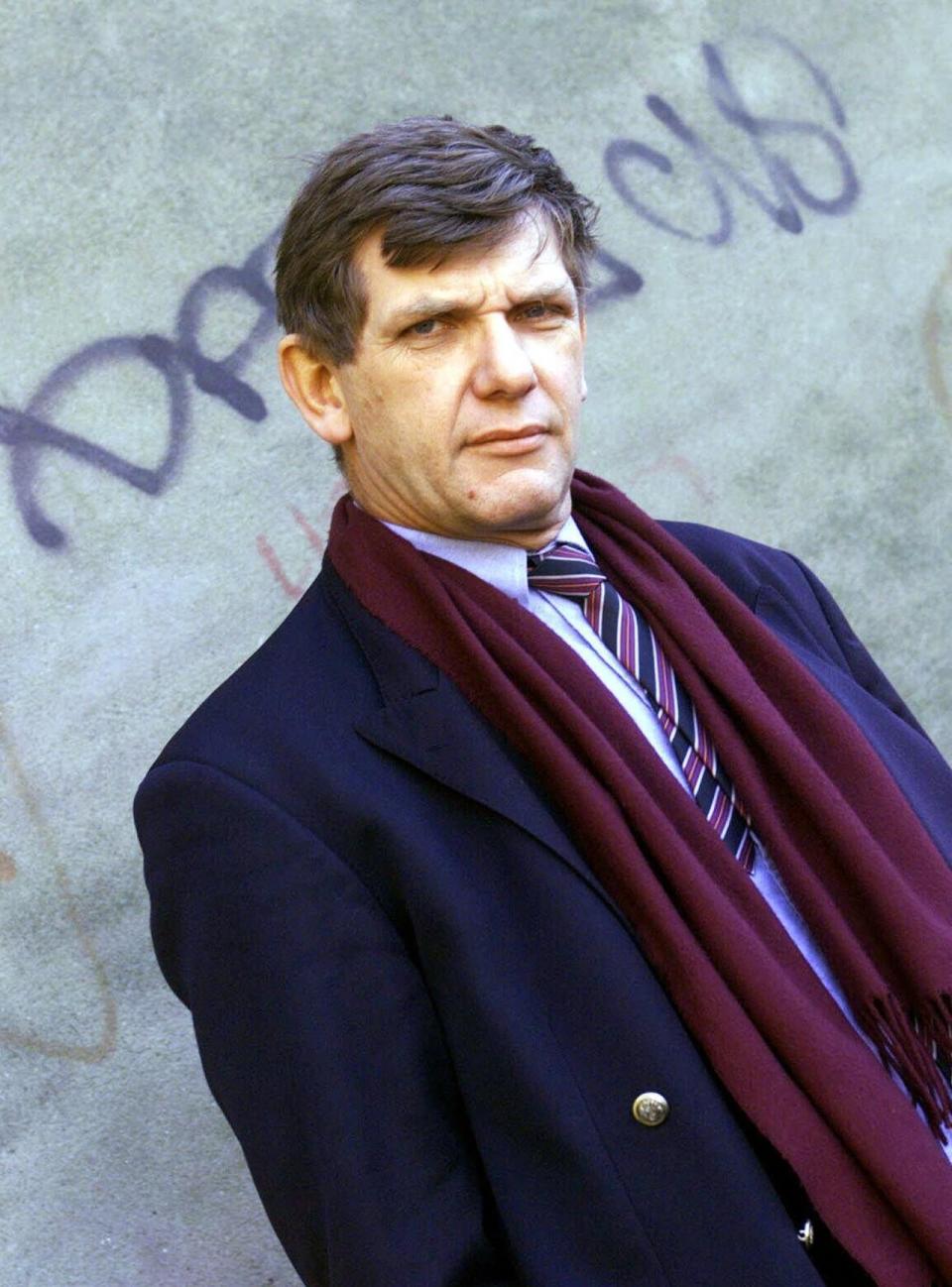
An undated photo of van Velzen. (Hans Peters/Telegraaf/Associated Press)
At the time, van Velzen maintained that he had done nothing wrong. He blamed Alder Hey, saying he worked in a "rundown" department and the hospital ran out of money, which meant work related to autopsies couldn't be completed. He claimed he never took organs from a body without parents' consent.
"That people forgot to tell the parents what a post-mortem actually is, is terrible, but it is not my fault," he told the BBC in 2001.
For Dooley, it was galling to learn through the inquiry that one of the Liverpool administrators who had written a letter of reference for van Velzen had in fact been trying to get rid of him.
But his former IWK colleagues weren't surprised by what was revealed at Alder Hey. The van Velzen they had come to know was dishonest, willing to fabricate results and cut corners, propelled by "uncontrolled ambition," a pathologist with little insight into his own weaknesses who refused to consult with others.
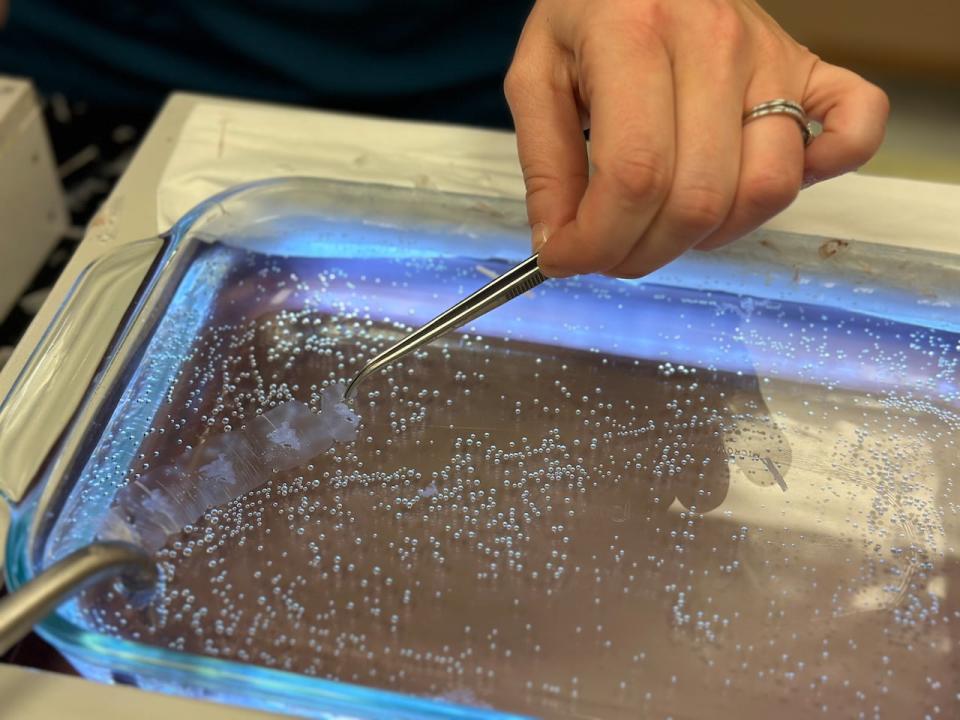
A 'ribbon' of tissue is shown being dipped into a tray of water in a laboratory at the IWK Health Centre. (Richard Cuthbertson/CBC)
They note that while van Velzen was allowed to work alone in Liverpool, with staff under his control, he never did so at the IWK.
The IWK's autopsy consent forms were more explicit, but by this time van Velzen's research interest had also shifted and there was no longer a reason to hoard hundreds of organs. There was no evidence that organs were taken and stored at the IWK without parents' consent.
Tissue and organs from an eight-year-old child were later found at van Velzen's storage container in the Burnside industrial park in Dartmouth, N.S., but it was determined they had been sent to him by parents outside Nova Scotia.
Van Velzen later pleaded guilty to offering indignity to human remains and was handed a conditional discharge. He never faced charges in the U.K.
For Fraser, a key takeaway is the IWK's policy of pathologists reviewing each other's work. At points in his IWK career, he said, he was just one of two pathologists at the hospital. They were stretched beyond thin, the floor of his office would be stacked with cases, but they never abandoned that quality assurance measure.
It's what helped lead to van Velzen's downfall.
Following the Alder Hey scandal, and after losing his medical licences in Canada and the U.K., van Velzen co-founded a Dutch company that manufactures a preservative solution for cut flowers and fruit. Reached by CBC News at his home last week, he declined to do an interview.
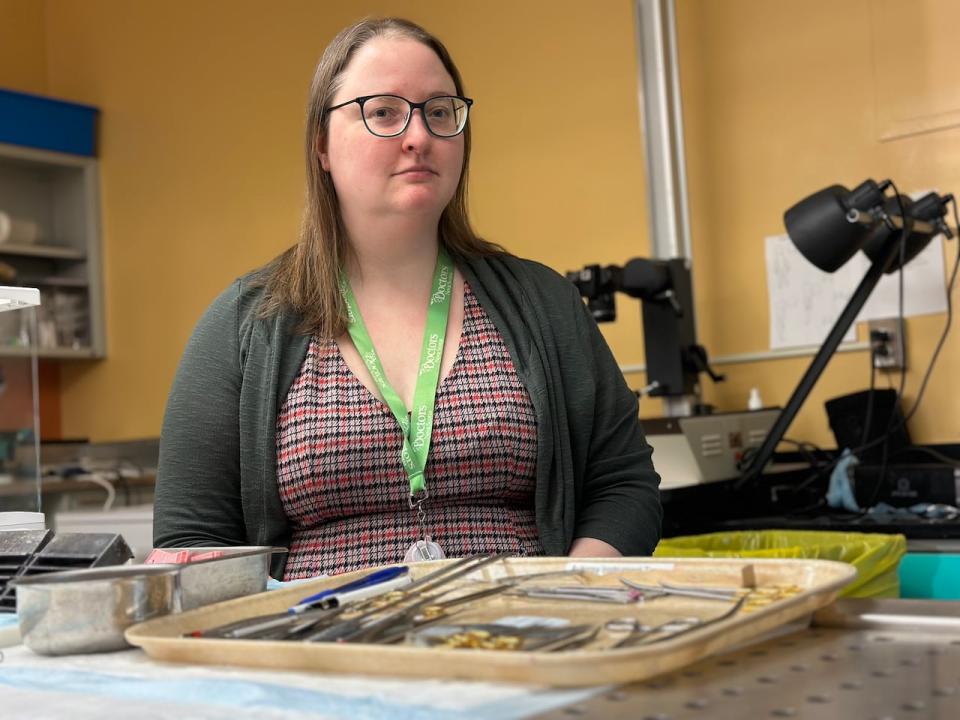
Dr. Erica Schollenberg, the head of anatomical pathology at the IWK Health Centre, is shown in an autopsy suite on Dec. 6. (Richard Cuthbertson/CBC)
It's not clear, then, what he would think of the fact that a copy of the 535-page report from the Alder Hey inquiry (including 191 pages dedicated to "The van Velzen years") sits on the shelf of one of his old offices at the IWK.
It's there alongside other inquiry reports. There is the Ontario inquiry that examined the work of Dr. Charles Smith, whose autopsy mistakes led to wrongful convictions. There is Cameron report into erroneous breast cancer screening results in Newfoundland, and the Creaghan inquiry into faulty cancer diagnoses in Miramichi, N.B.
"I have them all, and I keep trying to convince residents to read them," said Dr. Erica Schollenberg, the office's current occupant.
Schollenberg, who began working at the IWK in 2015 and is now head of anatomical pathology at the hospital, admits that since medical school she has been fascinated by the "true crime of medicine."
The van Velzen case, she said, is different from other kinds of pathology scandals triggered by incompetence or hospital dysfunction. He was dishonest, and the lesson to young doctors isn't, "Don't be a liar."
She said the very question three IWK pathologists asked themselves more than 25 years ago — Would you let this doctor treat one of your loved-ones? — has become a common one for licensing colleges to ask.
"It's a very telling question and it's very hard for people to answer that question dishonestly," she said.
MORE TOP STORIES

